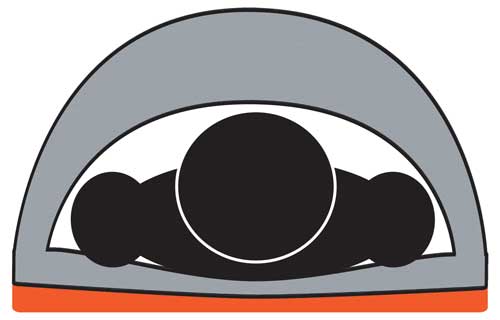What are Baffles? Why are they important?
Down sleeping bags are much more complicated than you may think. They are much more than two pieces of fabric with a down fill. In order to maximise warmth to weight ratios, down sleeping bags take a lot of skill to design and manufacture. As with a duck paddling on water where most of the the action is below the surface, this is the case with down products.
Within the sleeping bag\’s shell are a number of chambers called Baffles. Baffles contain the down used to insulate. The better their design, the better the performance of the sleeping bag. To insulate efficiently the down has to loft, which means to expand as it traps warm air. Too much space in the baffle is inefficient as the down disperses. Too little space constricts the down and it can not loft fully.
There are a number of different types of baffles. All have advantages and disadvantages, which vary depending upon the type of product.
In this section five types of baffle are examined,
- Stitched Through Baffles
- Boxwall Baffles
- V Baffles
- Trapezoid Baffles
- Brick Baffles
Stitched Through Baffles
The simplest baffle design is called Stitched Through. This is the easiest and lightest baffle to manufacture. However, heat is lost through the stitching and the down does not loft as efficiently around the edges of the baffles due to the lack of a sidewall. A sidewall allows for a better use of space and allows all of the down to loft and, therefore to insulate more efficiently.
Stitched Through Baffles are normally only used on cheap sleeping bags, extremely lightweight sleeping bags and sleeping bag quilts. They are also used on Down Jackets since other baffle types are too complicated to be used in clothing.
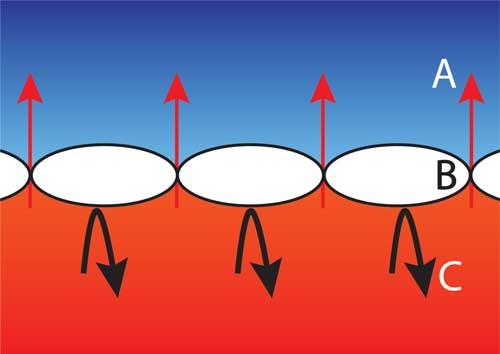
Boxwall Baffles
Boxwall Baffles are the simplest answer to some of the disadvantages of Stitched Through Baffles. The creation of sidewalls (as seen in the diagram) serves two purposes. Firstly the down contained within the baffle is able to loft fully and insulate better, as the ends of the baffle are not being pushed together by stitching. Secondly, there is no stitching that goes directly from the inner to the outer shell, this markedly reduces body heat lost.
Boxwall Baffles are the lightest baffle design with a sidewall. Our two lightest down sleeping bags the Quantum 200 and the Ultralight 200 are made with Boxwall Baffles on both the top and base. All of our other down sleeping bags are constructed with a Boxwall Baffle base.
Several types of boxwall designs exist, including rectangular, diamond shape and curved. They all share vertical baffle sidewalls.
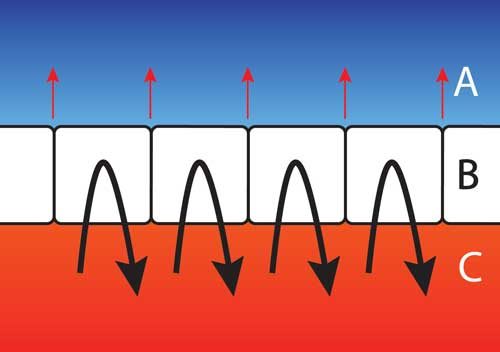
V Baffles
V Baffles are the most thermally efficient baffle. Each baffle sidewall is inclined at an angle and joins its neighbour to form a series of Vs. This gives twice as many baffles as a boxwall construction within the same size bag.
V Baffles work so well because they contain down much more effectively giving less chance of down migrating within the baffle chamber, therefore providing more even insulation. However, V Baffles come at a price. The additional fabric to create structure adds weight to the bag, and the additional manufacturing adds production costs in terms of labour and materials.
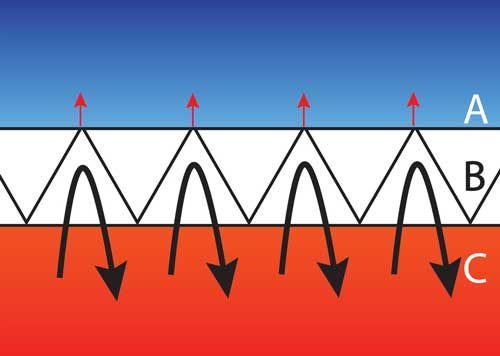
Trapezoid Baffles
The Trapezoid baffle design provides a balance between the simplicity of Boxwall Baffles and the thermal efficiency of V Baffles. Trapezoid Baffles are more thermally efficient than Boxwall ones because there are more chambers to store the down and less chance of it dispersing. For the same amount of down there is normally a 2 to 3°C temperature difference between Boxwall and Trapezoid methods of construction.
Whilst V Baffles are more thermally efficient than Trapezoid Baffles, the cost of making sleeping bags with V Baffles is much greater. Trapezoid baffles help to keep prices lower and add less weight than V Baffles. For these reasons most sleeping bag manufacturers use Trapezoid baffles on most but the lightest weight or expedition bags. At Criterion, most of our down sleeping bags use the Trapezoid baffle design, including our Prime, Traveller and Lady Sleeping Bag ranges.
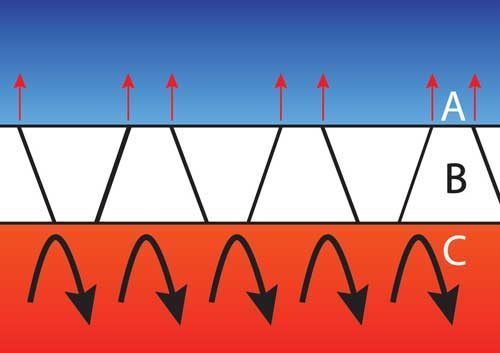
Brick Baffles
Brick Baffles are used for extreme cold weather down sleeping bags, and make use of two layers of offset Boxwall baffles. Trapezoid and V baffles are more thermally efficient than a single layer boxwall baffle, but in situations where much more down is needed Brick Baffles provide extremely high levels of insulation as well having a high warmth to weight ratio. The additional weight and costs of double Trapezoid and double V baffles would not be commercially viable.
Our Expedition 900 and Expedition 1100 down sleeping bags use a Brick construction.
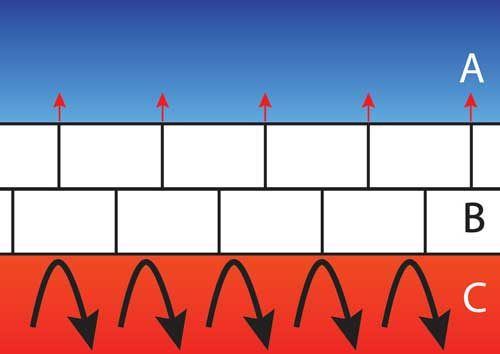
Differential Fill
Differential Fill means that the quantity of down in the base is less than the quantity in the top of the sleeping bag. At Criterion we employ a ratio of top: base = 3:2 (discounting the hood, neck and zip baffles). Hence the base has 40% of the total insulation instead of the 50% it would have if there was no Differential Fill.
The compaction of the base restricts loft and reduces its insulation value so the difference in warmth between 40% and 50% is quite insignificant. On the other hand, having 60% in the top gives a big warmth benefit compared with having 50%, since no compaction means that the extra down traps a fully proportionate extra quantity of air and loft is increased by a fifth.
Note – The Criterion Lady sleeping bags are shorter than our unisex bags and being female specific have a fill ratio of 55:45 with more down being distributed to the base and foot area.
Differential Cut
This is a manufacturing technique by which the outer surface of the top side of the sleeping bag is wider than lower (inside) surface. This helps the down to expand outwards from the centrally located body position thus facilitating optimum lofting.
